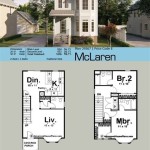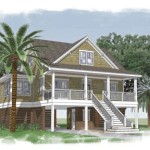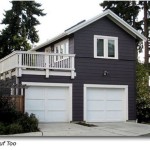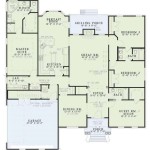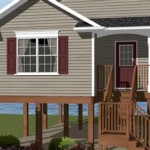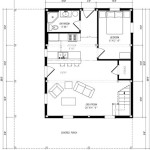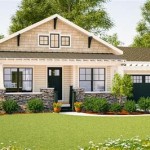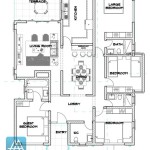Creating the Perfect 2nd Floor House Plans for Free
Designing the second floor of a house requires careful consideration of space, functionality, and aesthetics. While professional architectural services offer comprehensive solutions, creating effective 2nd floor house plans for free is entirely feasible with the right approach and available resources. This article explores the process of designing a second floor plan without incurring professional fees, focusing on key design principles, available tools, and practical considerations.
The initial step involves a comprehensive assessment of the existing structure's foundation and load-bearing capacity. The second floor’s design must integrate seamlessly with the existing house plan. This includes aligning walls, plumbing, and electrical systems where possible to minimise structural modifications and reduce construction costs. A detailed existing floor plan is crucial for accurate planning. If one isn't available, a meticulous measurement of the existing house is essential. This record should include the dimensions of all rooms, hallways, stairwells, and window and door placements. The location of existing plumbing and electrical lines must also be noted.
Furthermore, consideration should be given to potential building codes and regulations specific to the locality. These regulations often dictate minimum room sizes, ceiling heights, fire safety requirements, and setback distances from property lines. Neglecting these regulations can lead to costly revisions and delays later in the construction process. Online resources, local council websites, and building departments are valuable sources of information regarding building codes and regulations.
Defining Needs and Prioritising Spaces
Before diving into the design phase, it's imperative to define the purpose and functionality of the second floor. Determining the number of bedrooms, bathrooms, living areas, and storage spaces required is crucial. Prioritising needs based on lifestyle, family size, and future plans will inform design decisions. Consider how the second floor will be used. Will it primarily serve as sleeping quarters, or will it include a home office, playroom, or entertainment area? The intended use will influence room sizes, layouts, and the need for specialised features such as soundproofing or dedicated storage.
It's also important to anticipate future needs. If the family is likely to grow, incorporating flexible spaces that can be easily adapted to different uses is beneficial. This could involve designing a large room that can be partitioned into two smaller rooms in the future or including a finished attic space that can be converted into a bedroom or playroom as needed.
A detailed list of desired features should be compiled. This list may include ensuite bathrooms, walk-in closets, balconies, dormer windows, high ceilings, and skylights. Prioritising these features based on budget and feasibility will help to create a realistic and achievable design.
Consider the flow of traffic within the second floor. The layout should facilitate easy movement between rooms and prevent bottlenecks. Hallways should be wide enough to accommodate furniture and foot traffic. Stairs should be easily accessible and meet required safety standards. The relationship between different rooms should be carefully considered. For example, locating bedrooms away from noisy areas such as the living room or playroom can promote better sleep.
Utilising Free Software and Online Resources
Several free software programs and online resources are available to assist in creating 2nd floor house plans. These tools offer user-friendly interfaces and a range of features that enable users to create detailed floor plans, experiment with different layouts, and visualise the final design. SketchUp Free is a popular option, offering a 3D modelling platform that allows users to create detailed floor plans and visualise the space in three dimensions. It features a wide range of tools for drawing, editing, and annotating floor plans, and it supports the import of existing floor plans and the use of pre-designed furniture models.
Floorplanner is another online tool that provides a user-friendly interface for creating 2D and 3D floor plans. It offers a library of furniture and fixtures that can be easily dragged and dropped into the design, and it allows users to experiment with different color schemes and materials. Floorplanner also offers a virtual tour feature that allows users to virtually walk through the finished design.
Planner 5D is a user-friendly app that allows users to create 2D and 3D floor plans on their tablets or smartphones. It offers a library of furniture and decor items that can be easily added to the design, and it allows users to experiment with different layouts and design styles. These software programs typically include libraries of furniture, fixtures, and appliances that can be easily incorporated into the design, allowing users to visualise the space and experiment with different layouts. Many of these tools also offer features for creating 3D renderings and virtual tours, providing a realistic view of the finished space.
Online resources such as Pinterest and Houzz offer a wealth of inspiration for 2nd floor house plans. These platforms showcase a wide range of designs, layouts, and interior styles, allowing users to gather ideas and identify design elements that resonate with their personal preferences. Reviewing existing floor plans and layouts online can provide valuable insights into space planning, room proportions, and traffic flow.
Free online tutorials and video demonstrations can provide step-by-step guidance on using these software programs and online resources. These tutorials cover a wide range of topics, from basic drawing techniques to advanced design strategies.
Addressing Key Design Considerations
Several key design considerations must be addressed when creating 2nd floor house plans. These considerations include structural integrity, natural light, ventilation, and soundproofing.
Structural integrity is paramount. The design must ensure that the second floor is adequately supported by the existing structure. Consultation with a structural engineer may be necessary to assess the load-bearing capacity of the existing walls and foundation and to determine whether any structural modifications are required. The location of load-bearing walls should be carefully considered, as these walls cannot be moved without significant structural modifications. The design should also account for the weight of furniture, appliances, and occupants.
Maximising natural light is crucial for creating a bright and inviting space. Windows should be strategically placed to capture as much natural light as possible. Large windows, skylights, and dormer windows can be used to flood the second floor with sunlight. The orientation of the house should be considered when determining window placement, as south-facing windows will receive the most sunlight throughout the day. The use of light-colored paint and reflective surfaces can also help to maximise natural light.
Effective ventilation is essential for maintaining a comfortable and healthy indoor environment. Windows should be operable to allow for natural ventilation. Ceiling fans and exhaust fans can also be used to improve air circulation. The design should also consider the placement of HVAC systems to ensure that the second floor is adequately heated and cooled. Proper ventilation can help to prevent moisture buildup, which can lead to mold and mildew growth. Cross-ventilation, achieved by placing windows on opposite sides of the room, is particularly effective at promoting air circulation.
Soundproofing is an important consideration, particularly for bedrooms and home offices. Thick walls, insulated windows, and sound-absorbing materials can be used to reduce noise transmission from the ground floor and surrounding areas. The use of carpets and rugs can also help to dampen sound. The placement of bedrooms away from noisy areas such as the living room or kitchen can further minimise noise disturbance. Soundproofing can be particularly important for homes located in busy areas or near sources of noise such as traffic or airports.
Careful planning and attention to detail are essential for creating effective 2nd floor house plans for free. While professional architectural services offer comprehensive solutions, utilising available online resources, free software programs, and a solid understanding of key design principles can enable individuals to create functional, aesthetically pleasing, and structurally sound second floor designs without incurring professional fees. It is important to always check with local authorities for permits and code compliance before starting any construction.

Small 2 Story House Floor Plan With Car Garage

25 Stunning 2bhk House Plan Ideas Designs For

16 House Plans To Copy Homify

𝟏𝟎𝟎𝟎 𝐒𝐪 𝐅𝐭 𝐇𝐨𝐮𝐬𝐞 𝐃𝐞𝐬𝐢𝐠𝐧𝐬 With Images

12 Examples Of Floor Plans With Dimensions

Best House Plan Design In We Provide

25 Stunning 2bhk House Plan Ideas Designs For

12 Examples Of Floor Plans With Dimensions

Small House Design 4 X 7 M Two Y

Two Story House Plans With Garage And Living Room In The Middle
Related Posts

